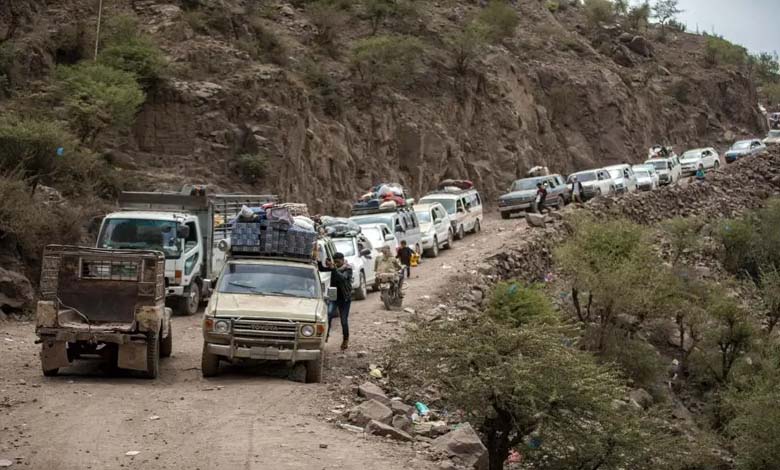Houthis’ Opening of a Vital Road Between Sanaa and Aden Reflects a Tactical Shift

The reopening of a vital road between Sanaa and Aden, after seven years of closure, has brought much-needed relief to thousands of residents who had been forced to use long and exhausting alternative routes.
-
Painful blows to the Houthis: US-British airstrikes on Sanaa and Amran
-
The Houthis Struggle to Avoid al-Assad’s Fate… What Are They Doing?
This move, which connects the Houthi-controlled capital Sanaa to the government-held city of Aden, reflects a tactical shift by the rebels. Backed by Iran, the group appears to be seeking political and economic gains, particularly in light of recent U.S. airstrikes that destroyed Sanaa International Airport — the capital’s only air access point — depriving them of a key financial lifeline.
The U.S. strikes severely damaged vital infrastructure used by the Houthis for military purposes, including missile depots, drone launch sites, and command centers. The targeting of ports was aimed at disrupting weapons and supply deliveries to the group.
-
A Last Card against Isolation: The Houthis Resort to the “Sanaa Conference”
-
“The Bells of Damascus” Alarm the Houthis: Yemeni Calls Intensify to “Uproot the Militias”
The road opening is seen as a challenge to the internationally recognized government in Aden, with the Houthis taking unilateral initiative. This could place the government in a defensive position while portraying the rebels as the ones in control, making decisions in the interest of the people.
It also sends a signal to Saudi Arabia that the Houthis are serious about pursuing a political solution, while maintaining their ability to influence ground realities.
The rebels aim to solidify their status as a de facto ruling power over much of Yemen, capable of making impactful decisions affecting everyday life.
-
Canada Adds Houthis to Terror List: Reasons and Consequences
-
Houthis on Canada’s Terrorism List: Implications and Expectations
On Thursday, the office of Dhale Governor Ali Moqbel Saleh stated via X: “The international road connecting Aden to Sanaa was officially reopened today — a long-awaited move for thousands of citizens.”
He added that this significant step was directly supervised by the governor himself, who played a key role in facilitating the process.
The reopening has been widely welcomed, bringing a sense of relief in both the north and the south after seven years of a critical route being shut, which had burdened residents and forced them to travel long detours.
-
The Houthis escalate hostility towards Israel as the West responds with harsh strikes: What’s the story?
-
With Deceptive Promises… Houthis “Recruit” Yemenis to Fight in Ukraine
This move is seen as a positive step toward improving living and humanitarian conditions in the country, fostering connectivity and cooperation between regions. It is expected to positively impact trade and mobility, potentially restoring economic and social ties between citizens.
On Monday, the Houthis announced their unilateral decision to open the road, calling it an “initiative to ease citizens’ suffering,” according to the group’s official Saba news agency.
The direct route now shortens the distance between Sanaa and Aden to approximately 360 km, compared to more than 600 km using alternative roads, according to local Yemeni media.
-
The Houthis are preparing to leave Hodeidah… What are they doing?
-
Due to the Brotherhood and the Houthis… Disasters and Tragedies on the Roads of Taiz
On December 23, 2023, UN Envoy Hans Grundberg announced that the Yemeni government and the Houthis had committed to a roadmap that included a comprehensive ceasefire and improved living conditions. However, the agreement has yet to be implemented, with both sides blaming each other for the delay.
Since April 2022, Yemen has seen a relative de-escalation after years of war between the internationally recognized government and the Houthis, who control the capital and large parts of the north.
The war has devastated most sectors in Yemen, causing one of the world’s worst humanitarian crises according to the UN, which warns that damage to ports — critical for aid and trade — may worsen shortages of food, medicine, and fuel, pushing more people toward famine and disease.











